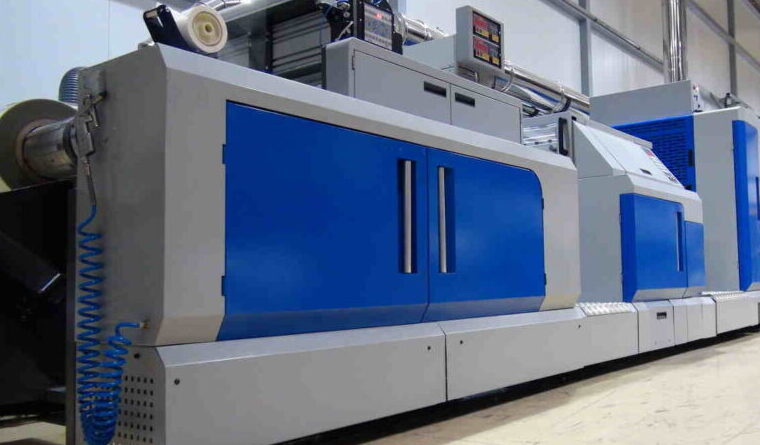Rotary offset machines offer the best value for money and are adapted to the needs of the market.
The offset printing system has several advantages over other printing methods: firstly, the cost. For short and medium runs, it offers a much better value for money than flexography or rotogravure. Only for long print runs, rotogravure has a higher performance, but without reaching the same resolution quality. Since the market tends towards shorter print runs and lower minimum quantities, as well as greater customization of jobs, investing in offset equipment is the safest option.
Since the industry introduced rotary offset printing in the mid-1990s and developed UV- or EB-curable inks, the other technologies have been gradually losing ground. In Moreover the difficulty of handling the large and heavy cassettes with which those rotary machines worked was solved by Rotatek’s development of the variable offset system with interchangeable sleeves.
The solid inks associated with UV or EB curing allow offset to offer great performances also in printing on non-absorbent substrates, such as plastics and different polyolefins, which are essential for the packaging industry.
These are clean curing technologies, which do not generate Volatile Organic Compounds (VOCs) or waste; to these environmental advantages, we must add the ability of offset to use these inks on any width of substrate, which is beyond the reach of other printing systems.
What are the advantages and drawbacks of each printing technology?
Offset printing
These are some of the advantages offered by the offset system:
- The plates are economical, of fast production, and their replacement or correction is easy.
- Short to medium runs are economical.
- It prints fine lines and keeps the bright spots in halftone images better than flexography and rotogravure.
- Supports exceptionally fine halftone screens.
- Prints on any kind of surface.
- Offers low halftone gain and an excellent print log.
- Some color adjustments can be made while printing.
Its weak points are:
- Oil-based inks dry very slowly, although this is solved by using UV or EB curing inks.
- It does not produce solid color surfaces as well as flexography or rotogravure do, and the input is quite low; this is overcome by placing an additional flexographic module before the offset printing. The modularity of the Rotatek presses offers this and many other alternatives.
- Oil-based inks and the need to wet the substrate can hinder printing. The solution consists of a water-cooling system and a composite solution pump system. Rotatek offset presses include this system to ensure the temperature, PH, and correct ink-water balance.
- The initial investment in offset printing equipment is higher than that required for flexography, but this investment pays off thanks to the much lower consumption of inks and plates.
Flexographic printing
The strengths of flexography are:
- It prints large surfaces evenly and with good consistency.
- It prints rough and uneven substrates.
- Can reach high speeds.
- Can use water-based inks.
Among its disadvantages, we have:
- Appearance of the halo effect.
- It is sensitive to pressure changes from the press
- The minimum size of raster dots does not meet the definition of offset printing. Neither in the reproduction of fine lines.
- The halftone dot gain is higher than in offset and rotogravure.
- In halftone images, very bright dots tend to disappear, while shadows tend to deepen.
- Its consumption of inks and polymers is much higher than that of offset.
Rotogravure printing
The advantages offered by rotogravure are:
- It reaches a very high printing speed.
- Allows reusing the engraved rollers.
- Achieves the best printing performance in very long print runs.
On the other hand, it has disadvantages such as:
- Preparing the cylinders is very expensive and time consuming.
- Given the high cost, it is only profitable for very high print runs.
- It does not offer a good resolution of small print, fine lines, and other small details.
- It requires inventory and storage of both basic and engraved cylinders, which makes this technology even more expensive.

